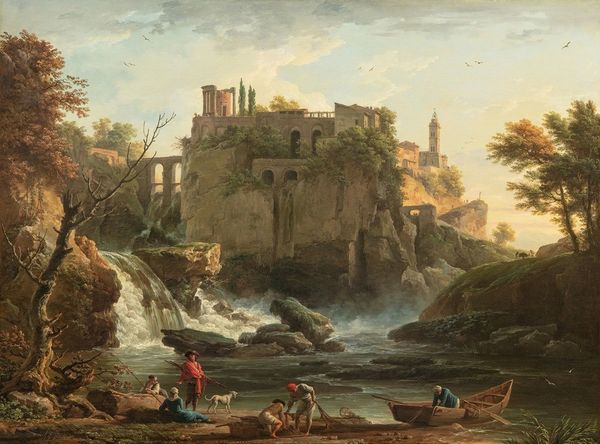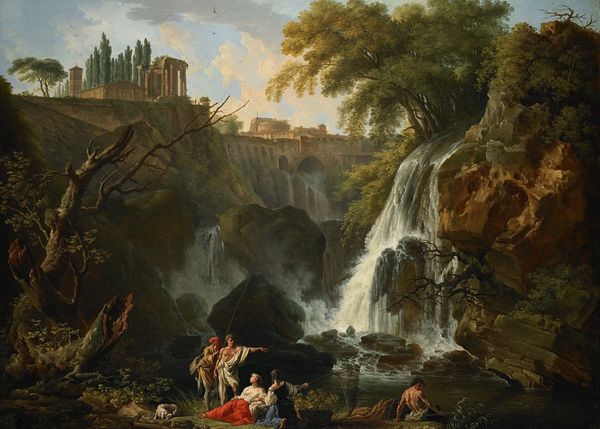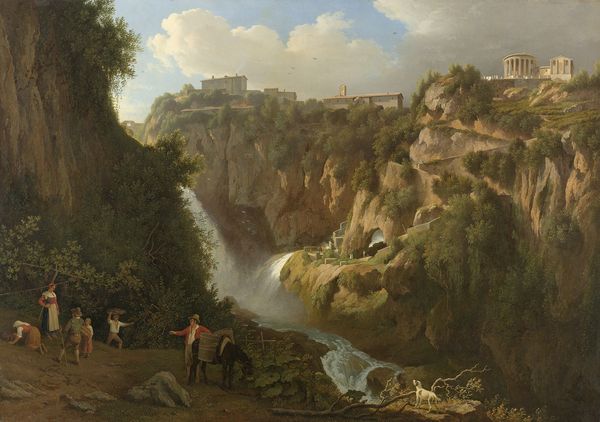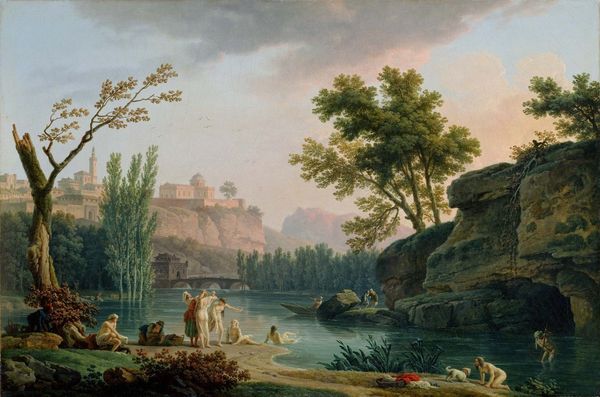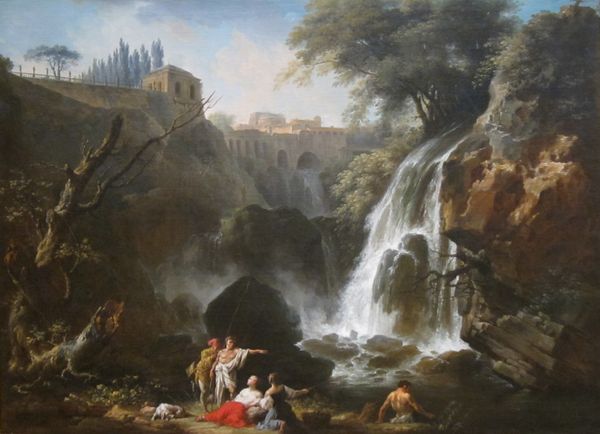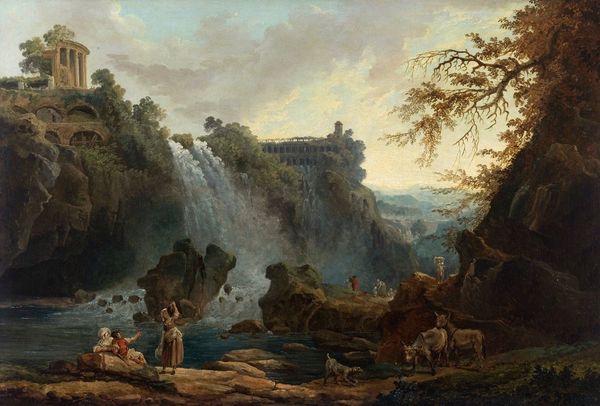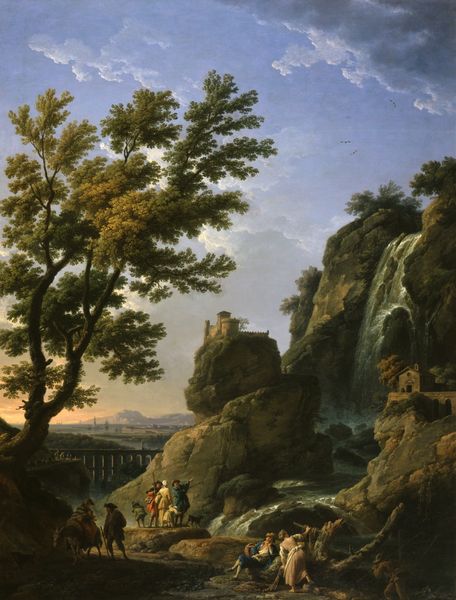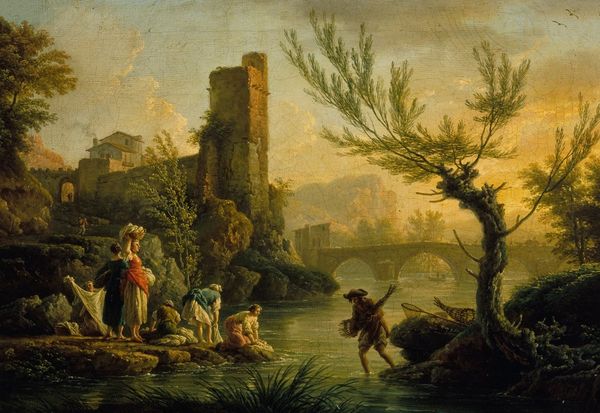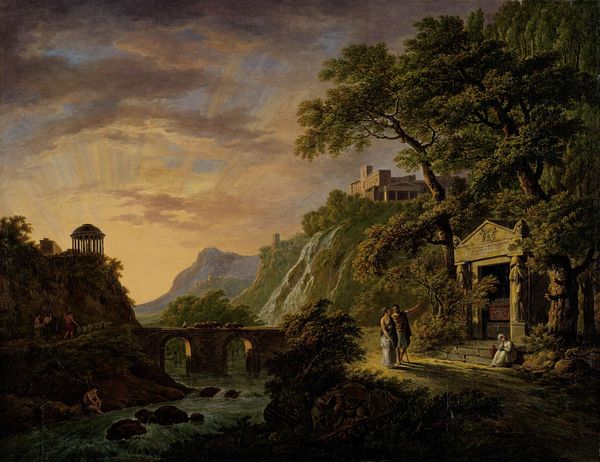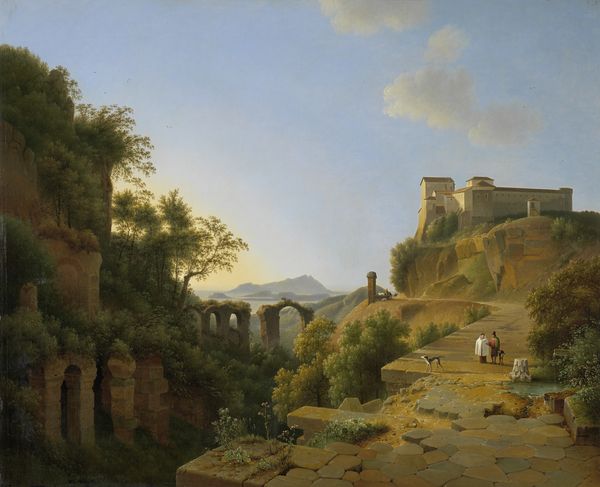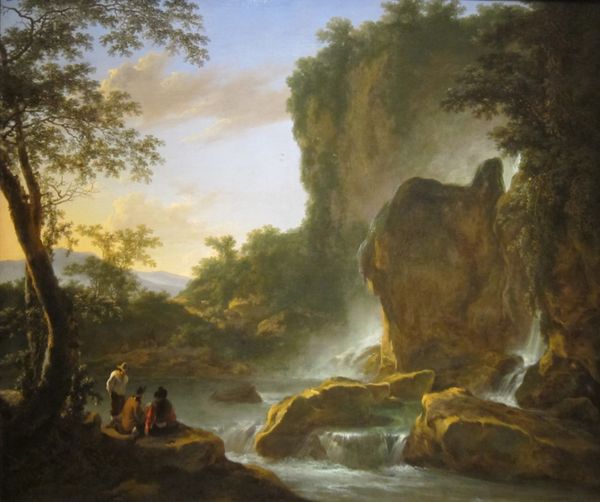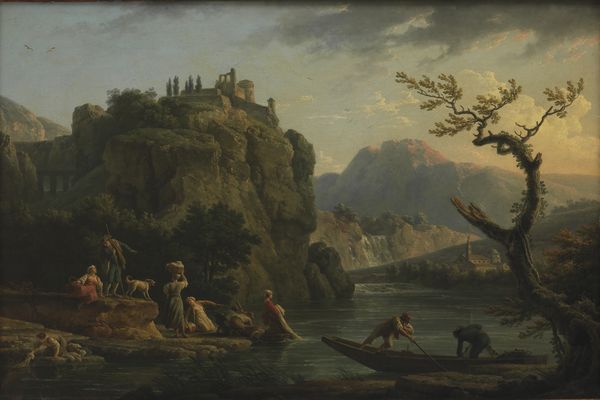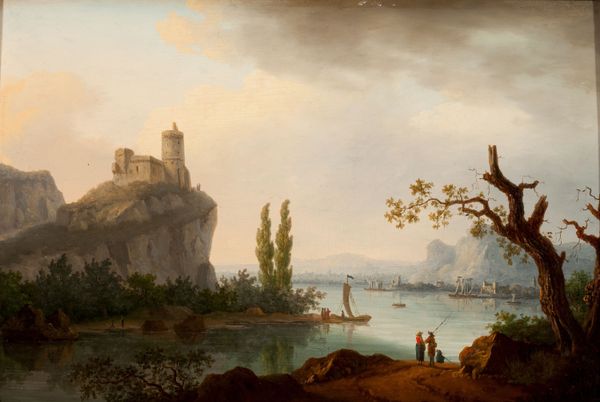
oil-paint
#
baroque
#
oil-paint
#
landscape
#
history-painting
#
rococo
Copyright: Public Domain: Artvee
Claude-Joseph Vernet painted “Les Cascatelles de Tivoli” at a time when the Grand Tour was at its height. It captures the vogue for idealized landscapes. Vernet was a master of the picturesque. He was celebrated for creating harmonious and serene visions of nature, often incorporating classical ruins and local figures. Painted in the mid-18th century, this image blends the real and the ideal: we see the famous waterfalls near Rome, and the Temple of Vesta, but they are carefully arranged to evoke a sense of timeless beauty. The painting reflects the cultural values of its time: the appreciation of classical antiquity, the taste for the sublime, and the romanticization of rural life. But it is important to remember that these images were often commissioned by wealthy patrons who sought to display their refined taste and their familiarity with the cultural landmarks of Europe. To truly understand paintings like this, we must turn to social history, art criticism, travel literature, and artists’ biographies. Only then can we fully understand the painting as an expression of power, taste, and ideology.
Comments
No comments
Be the first to comment and join the conversation on the ultimate creative platform.
